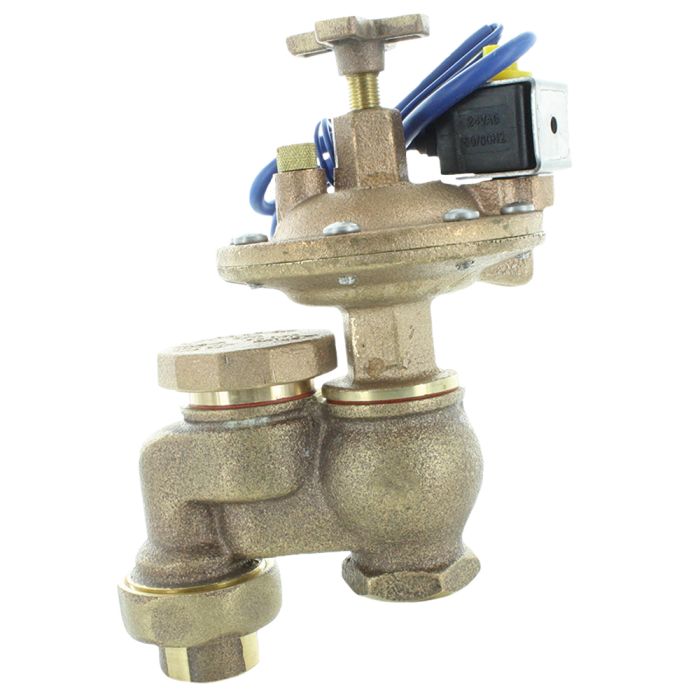pasadena_commut
Well-Known Member
I recently replaced the valve in one of these

Now some weeks later it has started to leak at the big nut on the lower left. I don't see any cracks or other damage either in that nut or the brass adapter beneath it, but water is coming out the bottom of that nut and a very small amount at the top. It is a pretty substantial leak, maybe 2 or 3 gallons when that set of sprinklers runs. The other end of the body is screwed into a steel pipe and most likely rusted permanently in place. I did not touch that nut when installing the valve, but I did have to unscrew the cap on the overflow valve. It is possible that put enough torque on that nut to loosen it up somehow. It only started leaking recently, not when the work was done. The other possibility is that the gardeners beat the crap out of it with their weed whacker, in much the same way that they are constantly decapitating the drip irrigation lines going to our roses.
Anyway, is there a washer or other sealer material between the valve body and the bottom brass adapter, underneath that nut? If so, what are the odds it can be replaced given the limited range when the nut is unscrewed and the rusted in place steel pipe on the other side (ie, no way this valve is going to tip even a fraction of a degree.)
Or I suppose I could wrap it super tightly with some sort of rubber tape and hope for the best. My guess is that that isn't going to work well, but at least it might limit the leakage, and the flow is only active 20 minutes a week.
Other than that, the only option would be to tighten the nut. I might try that, but prior experience with nuts like that of great age (it was most likely installed around 1958) is that they tend to split if given half a chance.
Unfortunately the steel inlet pipe is on a manifold with 2 other similar valves, on a galvanized pipe which runs directly to and forks off the main water line to the house. Dug up that junction once and it comes off the top of the main line, which is also galvanized. No separate shutoff valve for this branch. Right under a pretty large bush with big woody roots. So if things go bad, replacing the main line to the house and a lot of digging is likely.
Thanks.

Now some weeks later it has started to leak at the big nut on the lower left. I don't see any cracks or other damage either in that nut or the brass adapter beneath it, but water is coming out the bottom of that nut and a very small amount at the top. It is a pretty substantial leak, maybe 2 or 3 gallons when that set of sprinklers runs. The other end of the body is screwed into a steel pipe and most likely rusted permanently in place. I did not touch that nut when installing the valve, but I did have to unscrew the cap on the overflow valve. It is possible that put enough torque on that nut to loosen it up somehow. It only started leaking recently, not when the work was done. The other possibility is that the gardeners beat the crap out of it with their weed whacker, in much the same way that they are constantly decapitating the drip irrigation lines going to our roses.
Anyway, is there a washer or other sealer material between the valve body and the bottom brass adapter, underneath that nut? If so, what are the odds it can be replaced given the limited range when the nut is unscrewed and the rusted in place steel pipe on the other side (ie, no way this valve is going to tip even a fraction of a degree.)
Or I suppose I could wrap it super tightly with some sort of rubber tape and hope for the best. My guess is that that isn't going to work well, but at least it might limit the leakage, and the flow is only active 20 minutes a week.
Other than that, the only option would be to tighten the nut. I might try that, but prior experience with nuts like that of great age (it was most likely installed around 1958) is that they tend to split if given half a chance.
Unfortunately the steel inlet pipe is on a manifold with 2 other similar valves, on a galvanized pipe which runs directly to and forks off the main water line to the house. Dug up that junction once and it comes off the top of the main line, which is also galvanized. No separate shutoff valve for this branch. Right under a pretty large bush with big woody roots. So if things go bad, replacing the main line to the house and a lot of digging is likely.
Thanks.




